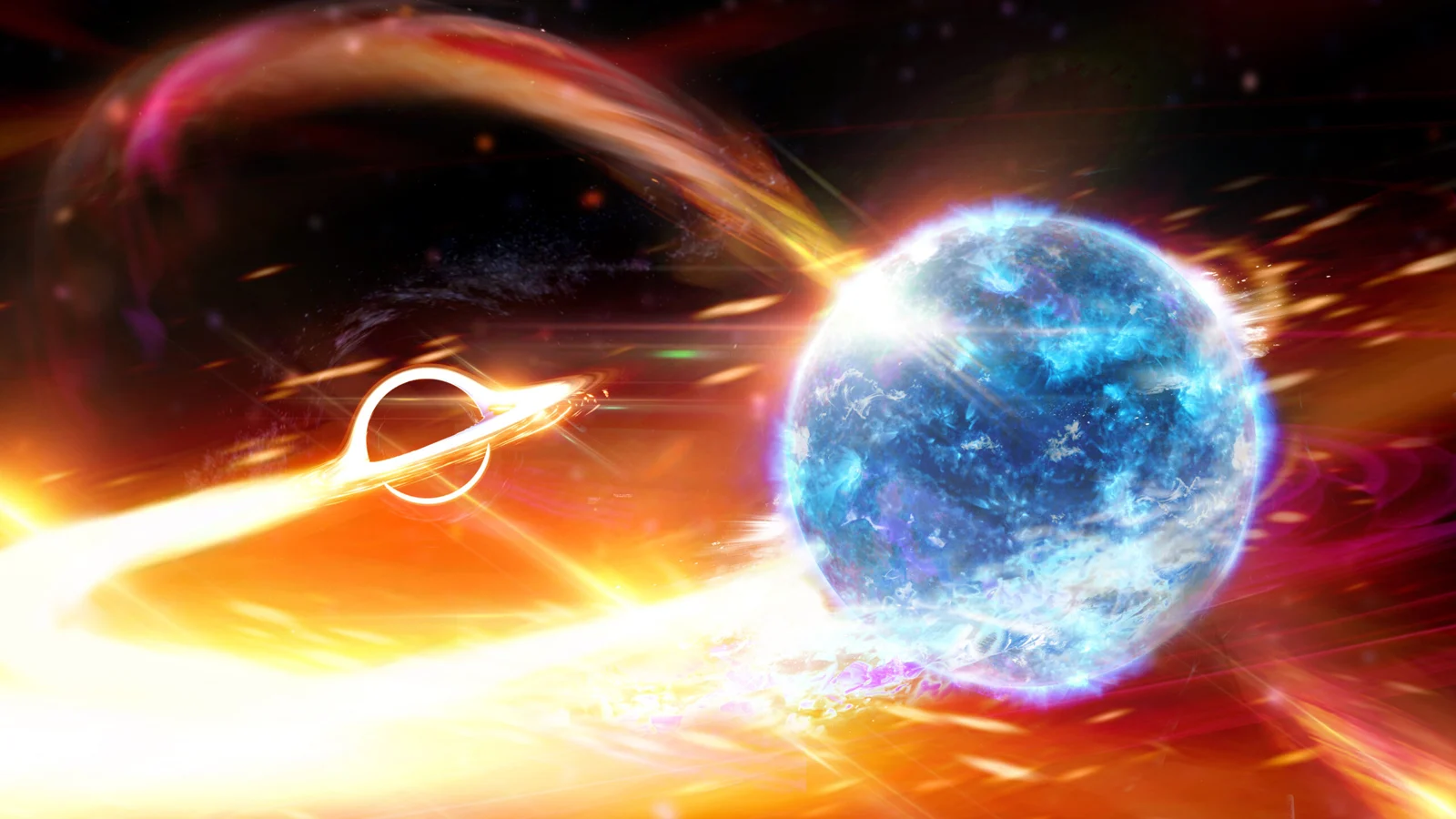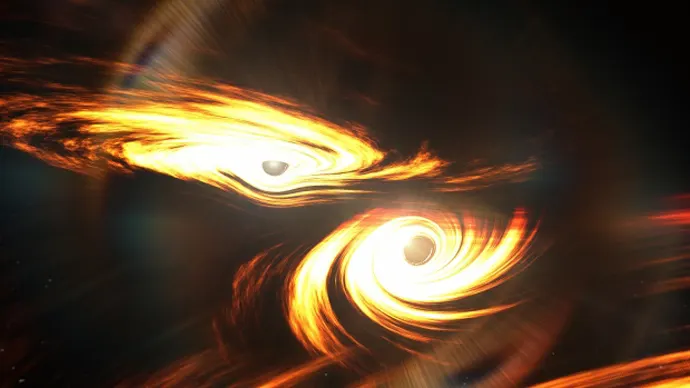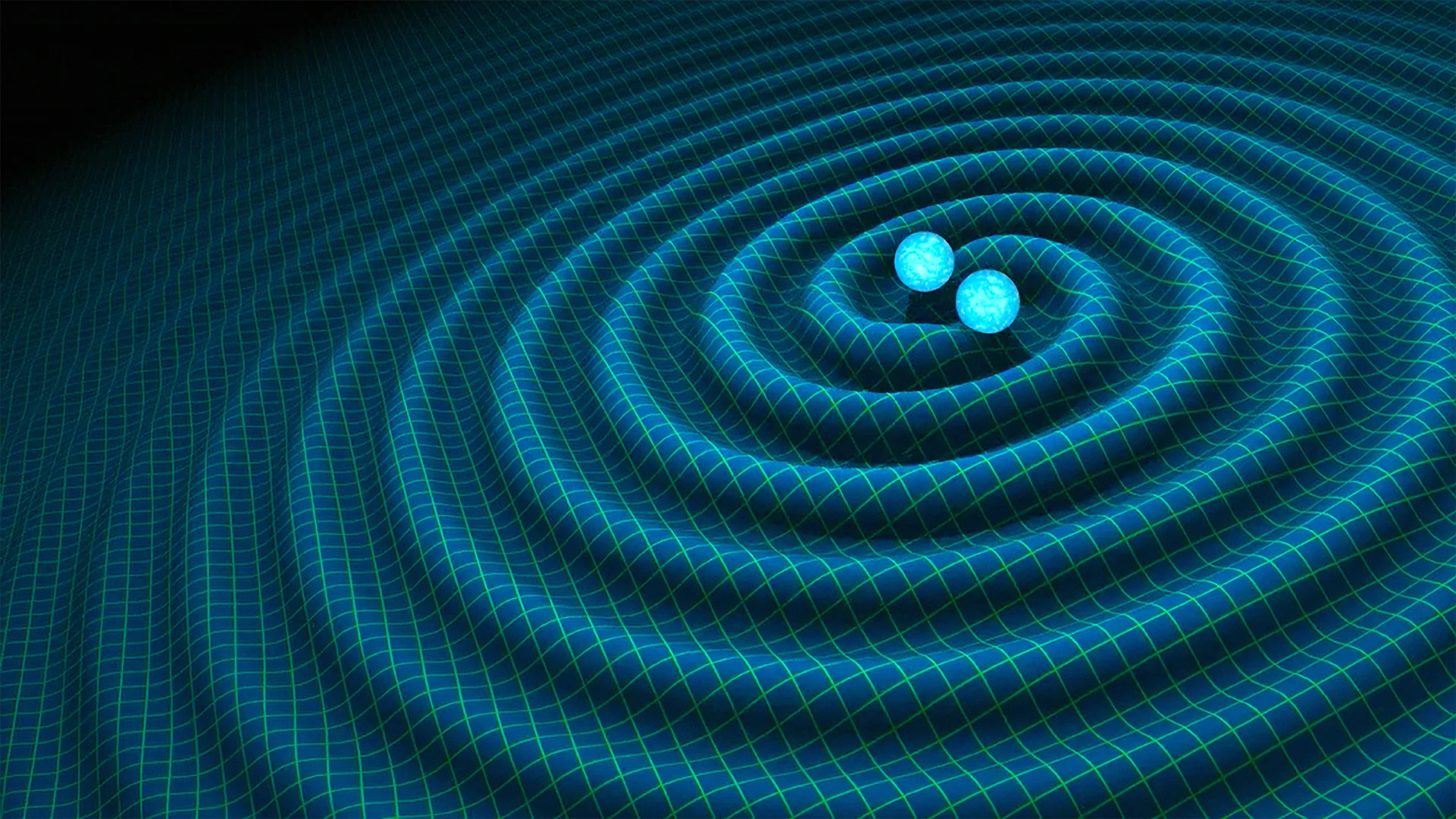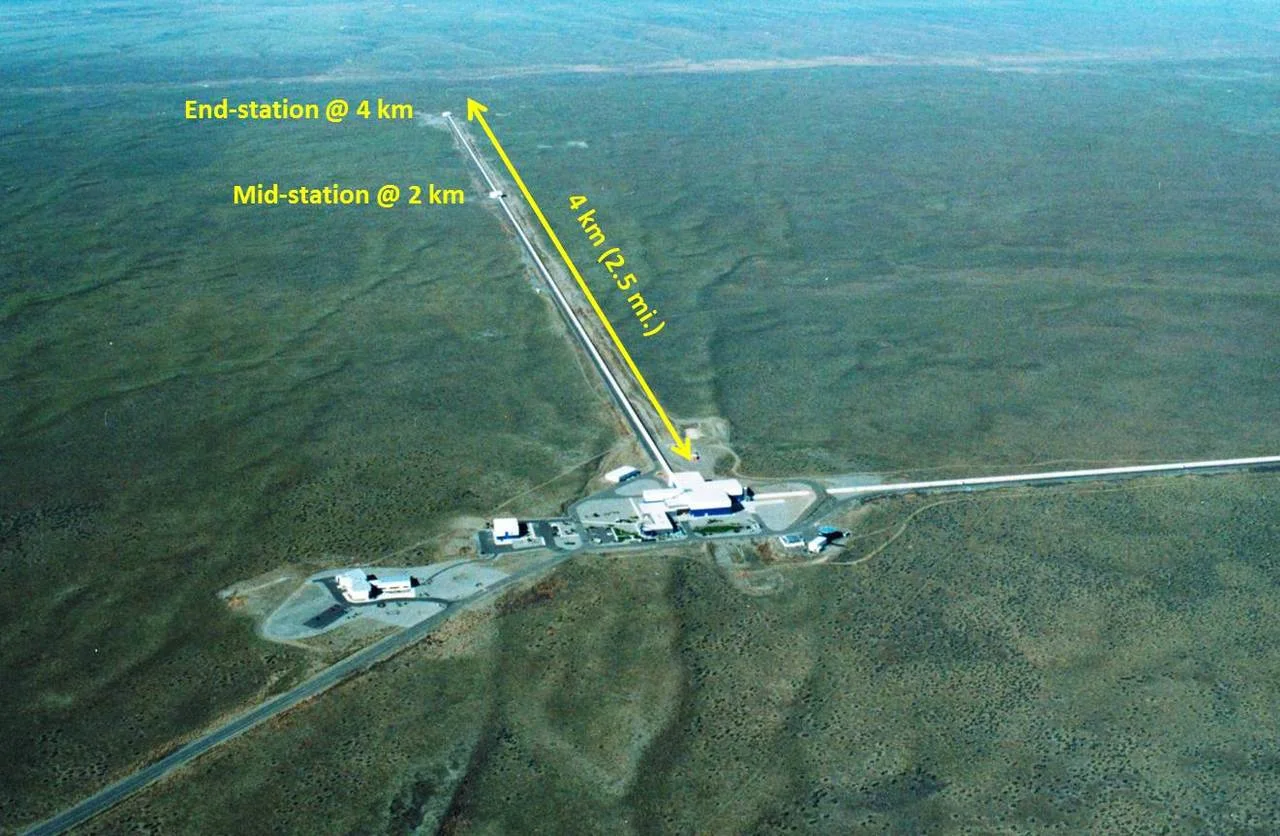
Spacetime ripples reveal black holes gobbling up their neutron star companions
Like 'Pac-Man', not 'Cookie Monster', astronomers see first confirmed instances of black holes consuming neutron stars.
Astronomers are reporting an exciting discovery from the depths of the cosmos. Tiny ripples in spacetime have been detected, revealing two separate events where a black hole has swallowed up a neutron star.
A little over five years ago, astronomers announced the very first detection of gravitational waves. These ripples in the very fabric of the universe were the result of two black holes — the most extreme objects in the cosmos — spiralling towards each other and merging in a colossal event.

An artist's impression of a pair of black holes about to collide to produce an even larger black hole. Credit: Mark Myers, ARC Centre of Excellence for Gravitational Wave Discovery (OzGrav)
Like the aftermath of tossing a pebble in a pond, the merger of these two objects sent ripples radiating outwards through the universe. These ripples were too small to be felt by anyone. Still, they were seen by LIGO — the Laser Interferometer Gravitational-Wave Observatory — which was specifically designed to detect them.
Since that discovery, more gravitational wave detectors have come online, such as the Virgo detector in Italy and the KAGRA detector in Japan. These have led to the discovery of roughly two dozen confirmed mergers and dozens more candidates. Many of the collisions detected have been between black holes. They have also seen mergers between neutron stars.

Two neutron stars spiral in towards one another in this artist impression, setting off ripples through spacetime known as gravitational waves. Credit: R. Hurt/Caltech-JPL
One type of merger that has eluded them so far is between a black hole and a neutron star. There was a possible detection roughly two years ago. Since then, though, it was ruled as more likely a merger between two black holes of different sizes.
Now, an international team of astronomers has made the first confirmed discovery of a black hole-neutron star merger!
Even more remarkable, after years of trying to find just one such merger, the LIGO and Virgo detectors captured two within just 10 days of each other. The first, named GW200105, was spotted on January 5, 2020, where a black hole about nine times the Sun's mass devoured a neutron star about 1.9 times the Sun's mass. The second, named GW200115, was seen on January 15, 2020, involving a six-solar-mass black hole and a 1.5-solar-mass neutron star.

A dense neutron star spirals in towards the maw of a black hole. Credit: Carl Knox/OzGrav ARC Centre of Excellence
The study that details these two discoveries, which involved around 1,400 scientists from across 285 universities and other research organizations, was published in The Astrophysical Journal Letters on June 29, 2021.
"With this new discovery of neutron star-black hole mergers outside our galaxy, we have found the missing type of binary," Astrid Lamberts, a co-author of the study from Observatoire de la Côte d'Azur, in Nice, France, said in a LIGO press release on Tuesday. "We can finally begin to understand how many of these systems exist, how often they merge, and why we have not yet seen examples in the Milky Way."
With different detectors in operation in different parts of the world (LIGO Livingston, LIGO Hanford, Virgo, and KAGRA), if they all pick up one of these events, astronomers have a decent chance of locating where it took place in the universe.
For GW200105, though, only LIGO Livingston and Virgo detected it. Furthermore, only LIGO saw a strong signal for it. Thus, while the researchers could narrow down the distance to around 900 million light years away, they couldn't pinpoint its location. The best they could do was say it occurred in an area of the sky roughly 34,000 times the size of the Moon.
For GW200115, both LIGO detectors and the Virgo detector picked it up. This allowed the astronomers to narrow it down to an area about 3,000 times the size of the Moon and estimate its distance at around 1 billion light years away from us.
LIKE PAC-MAN, NOT COOKIE MONSTER
When black holes collide, nothing escapes to tip us off. We only detect the ripples through spacetime they produce. However, when neutron stars merge, an explosion of energy and light accompanies it, like the 'kilonova' explosion that was detected in 2017.
Watch below: ESO Telescopes Observe 'Kilonova' from Gravitational Wave Source
For a black hole devouring a neutron star, however, up until now, there was no telling what we'd see. As it turns out, though, the black holes did not messily tear the neutron stars apart, as a certain blue muppet does with his cookies. Instead, they gobbled up their neutron star companions completely, more like a circular yellow dot-muncher does in his popular video games.
"These were not events where the black holes munched on the neutron stars like the Cookie Monster and flung bits and pieces about," said co-author Patrick Brady, Spokesperson of the LIGO Scientific Collaboration at the University of Wisconsin-Milwaukee. "That 'flinging about' is what would produce light, and we don't think that happened in these cases."
"Each collision isn't just the coming together of two massive and dense objects," co-author Susan Scott, a Distinguished Professor at Australian National University, said in an ANU press release. "It's really like Pac-Man, with a black hole swallowing its companion neutron star whole."
WHAT'S GOING ON HERE?
Stars out in the universe come in many different sizes and colours. At the smaller end, there are red dwarfs and yellow Sun-like stars. At the upper limit, there are blue hypergiants and red supergiants, hundreds to thousands of times the size of our Sun. Many of these stars are alone, but they often come in pairs or even groups.
Every one of these stars has a limited life span. Eventually, they all expend the last of the nuclear fuel in their core and die. Their outer layers are blasted out into space, and they leave behind their core as the final remnant of their existence. When this happens to our Sun, the result will be a white dwarf. This remnant will be roughly the size of the Earth but with nearly all the mass of the Sun.

This illustration compares the size of a neutron star to the area around Montreal. Credit: NASA's Goddard Space Flight Center
Larger stars have enough mass to crush their cores down almost as far as they can go. In these cases, the leftover remnant is a neutron star — a glowing sphere just 20 kilometres across but packed with more mass than is contained in our Sun.
When the largest stars die, their extreme mass can compress their core past the breaking point of physics. The force of gravity blows past any resistance the matter in the core may muster, collapsing it down to an infinitely small singularity. Surrounding that singularity is a region of space under such extremes that not even light can escape from within it.
Watch below: See the first-ever photo taken of a black hole
When a pair of massive stars have both died and left behind their remnants, the end result can be two neutron stars orbiting each other, or two black holes, or a black hole and a neutron star. This situation isn't often a stable one, though. The powerful gravitational pull between objects like this causes them to draw closer to one another. They spiral in, getting closer and closer until they eventually collide.
Astrophysicists figured out that if there was such a collision, the titanic forces involved would actually cause the fabric of the universe to warp and ripple. In the moments leading up to the final merger, these ripples would become so extreme that they would radiate outwards from the event, like waves on the surface of a pond. They called these ripples 'gravitational waves'.

The LIGO Hanford Observatory, in Washington State. Credit: Caltech/MIT/LIGO Lab
This led to the invention of LIGO, the Laser Interferometer Gravitational-Wave Observatory. This pair of detectors each fire a laser beam down a set of perpendicular 4 km-long tunnels and watch for tiny wiggles in the point the laser makes on the end target. These wiggles can be as small as the width of a single proton, so gravitational wave astronomers rely on very sensitive instruments to spot them.
The first detection of gravitational waves by LIGO, in 2015, earned a group of scientists the 2017 Nobel Prize in Physics. The Virgo detector in Italy came online shortly after that to aid in searching for more gravitational wave events. KAGRA was built in Japan for the same reason.
"The detector groups at LIGO, Virgo, and KAGRA are improving their detectors in preparation for the next observing run scheduled to begin in summer 2022," Brady said. "With the improved sensitivity, we hope to detect merger waves up to once per day and to better measure the properties of black holes and super-dense matter that makes up neutron stars."











